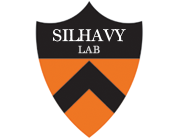OmpR mutants specifically defective for transcriptional activation
Type
In Escherichia coli, OmpR and EnvZ comprise a two component regulatory system that controls the relative expression of the outer membrane porin proteins, OmpF and OmpC. In this system, OmpR functions as a transcriptional regulator, serving as an activator of ompC, and as both an activator and a repressor of ompF. Previous evidence suggests that OmpR-mediated transcriptional activation involves direct interaction between OmpR and the C-terminal domain of the alpha subunit of RNA polymerase. However, it has remained unclear what region(s) of OmpR is directly involved in this proposed interaction. Moreover, little else is known about how OmpR activates transcription. To identify residues important for transcriptional activation, we screened for mutations in ompR that render the protein specifically defective in its ability to activate transcription. The isolated ompR alleles were characterized through haploid and diploid analyses at both the ompF and ompC promoters, and through an in vivo DNA binding assay. Through this approach, we have identified five amino acid residues in OmpR that are specifically required for transcriptional activation; R42, P179, E193, A196 and E198. We propose that these mutations define a region(s) in OmpR that may contact the C-terminal domain of alpha to mediate transcriptional activation.

